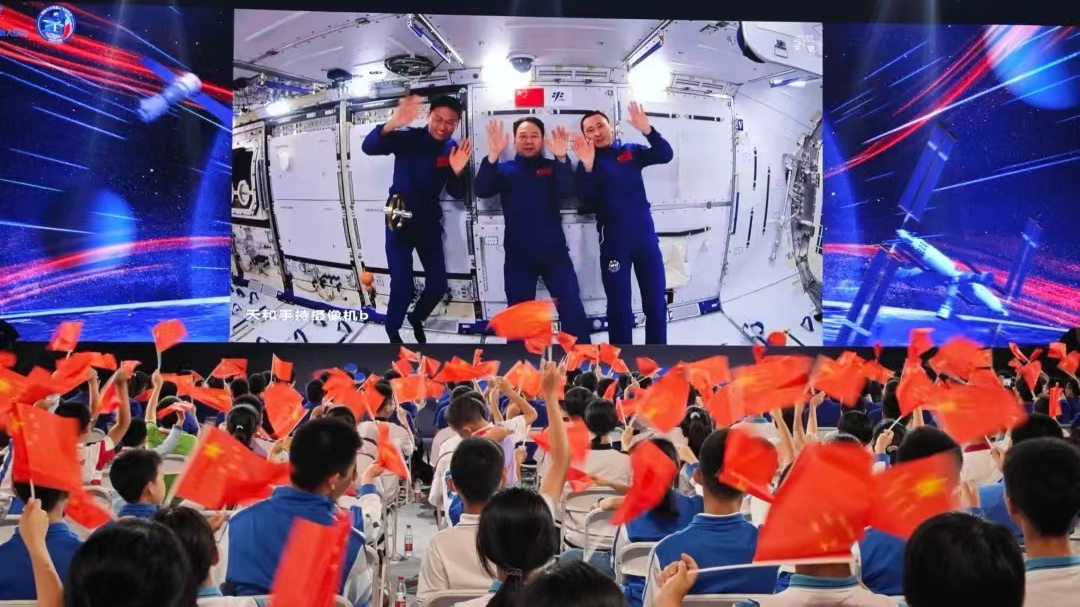
China's Shenzhou-16 crew, Jing Haipeng, Zhu Yangzhu and Gui Haichao, livestreamed the first science class from the Mengtian lab module of the China Space Station, September 21, 2023. /China Manned Space Agency
China's Shenzhou-16 crew, Jing Haipeng, Zhu Yangzhu and Gui Haichao, livestreamed the first science class from the Mengtian lab module of the China Space Station, September 21, 2023. /China Manned Space Agency
China's in-orbit Shenzhou-16 crew, including Jing Haipeng, Zhu Yangzhu and Gui Haichao, livestreamed the first science class from the Mengtian lab module of the China Space Station for the first time on Thursday.
It is the fourth lecture of the "Tiangong Class" series, China's space science education program, aiming at inspiring young people to pursue their space dreams.
Three Chinese astronauts working for the Shenzhou-16 mission have turned themselves into teachers like their predecessors to showcase amazing phenomena in space and explain the underlying science.
Click here for CGTN's livestream of the event.
The lecture started at 3:48 p.m. Beijing Time and lasted about 48 minutes.
About 2,800 students attended the class from five classrooms in north China's Beijing and Inner Mongolia Autonomous Region, east China's Zhejiang and Anhui provinces, and northwest China's Shaanxi Province.
The Wentian lab module
During the lecture, the crew showcased their living and working facilities in the Mengtian lab module.
Combined with the Tianhe core module and Wentian lab module, Mengtian, the last major component of China's space station, formed a basic T-shape structure of the space station.
10:05
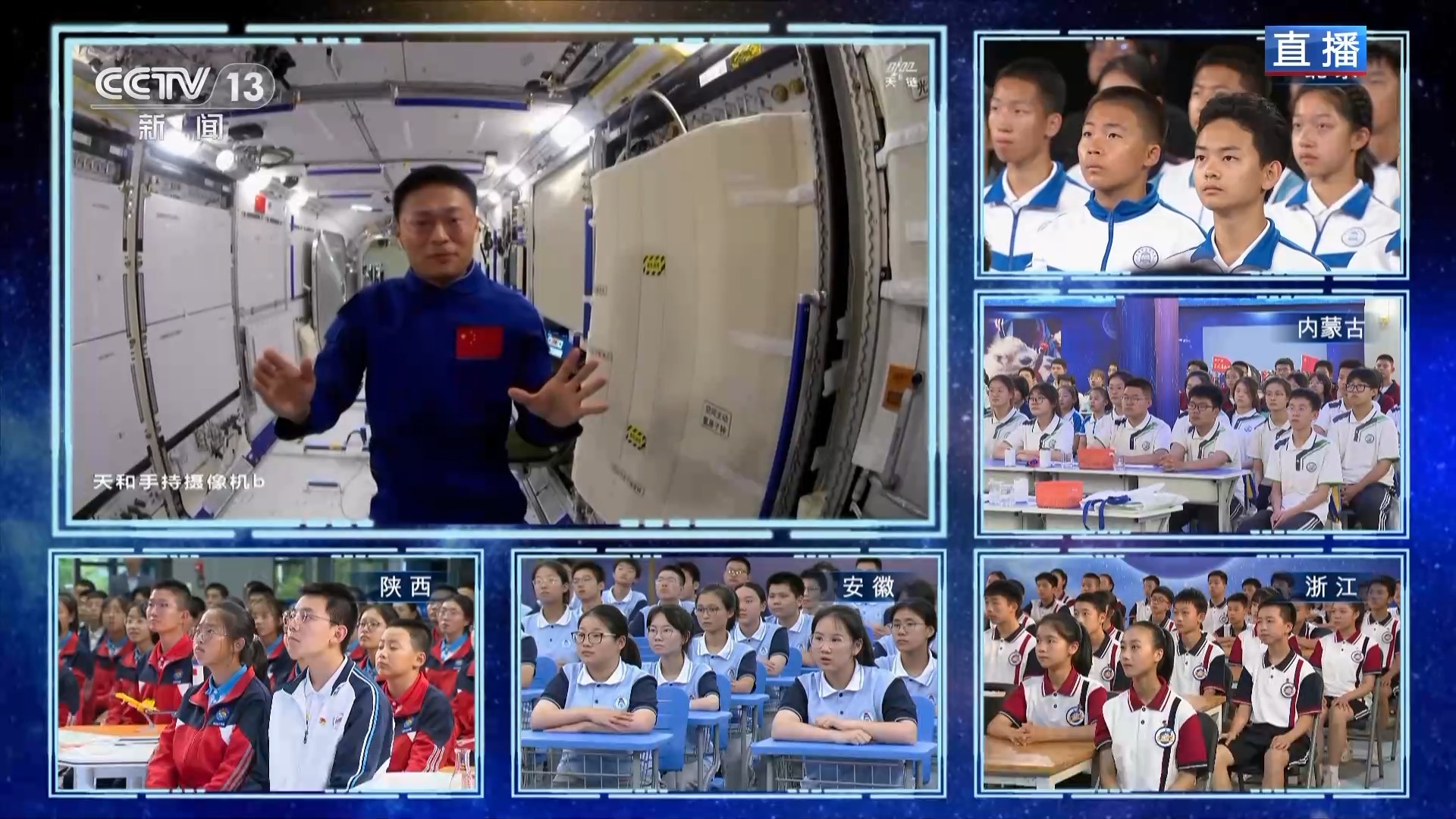
Experiments
The crew demonstrated several interesting experiments in the microgravity environment. For example, they showcased how a candle flame looks like and how its burning process is affected by gravity or its lack thereof, and how the water surface reacts to being hit with a table tennis ball.
"It is the first time that a flame was lighted in the Tiangong Class. It is a huge breakthrough, which shows that the operation of the space station has reached a very reliable stage," said Chen Zheng, associate professor in physics at Beijing Jiaotong University.
"The three-kilogram gyroscope, made by Gui's team, is a rare big teaching tool," Chen added.
04:38
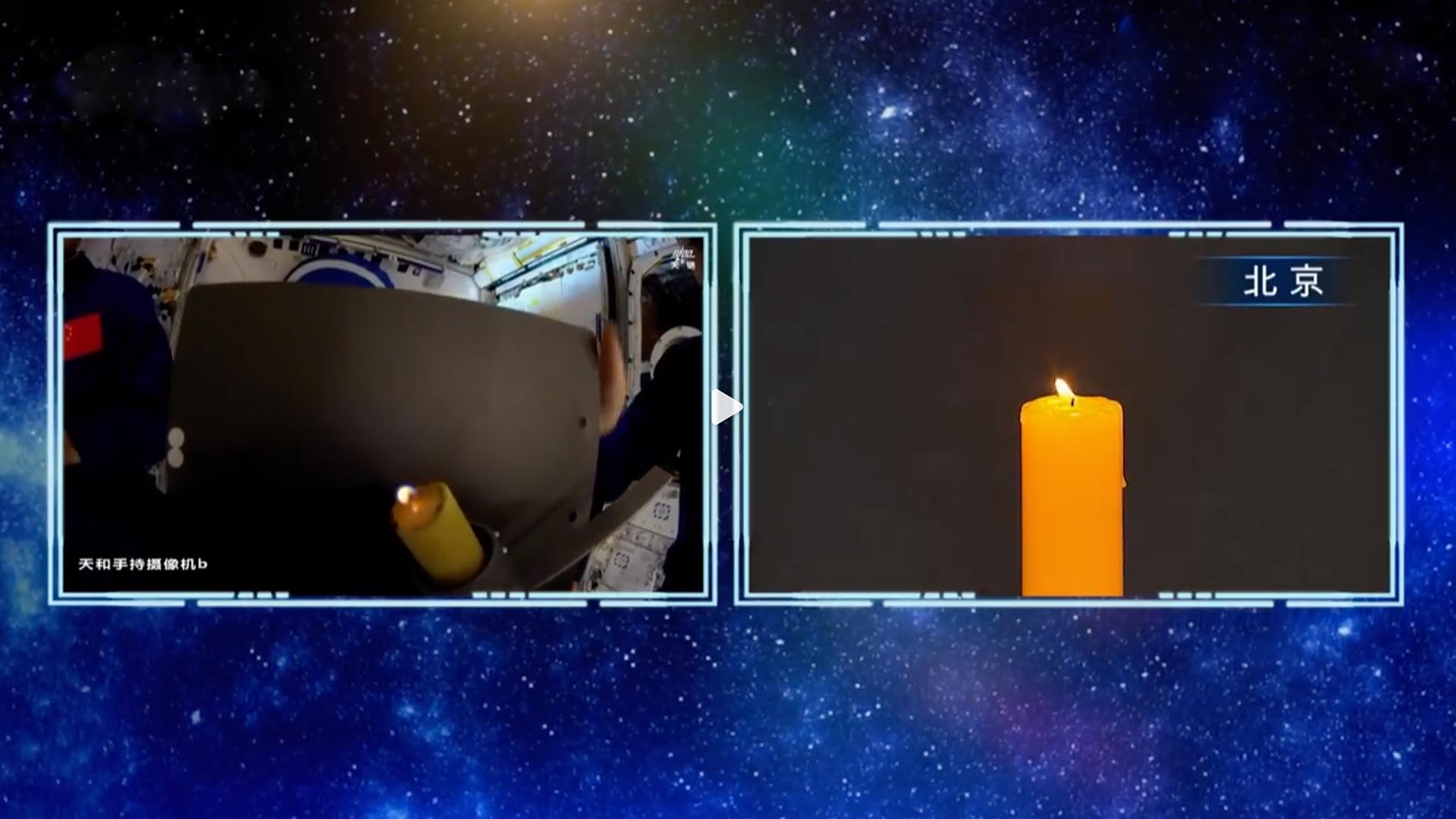
04:23
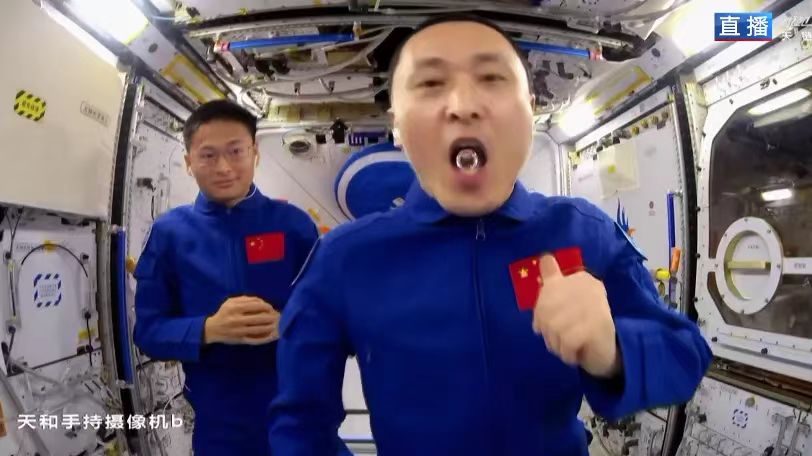
By demonstrating the collision of steel balls with different weights, they explained the law of conservation of momentum.
05:23
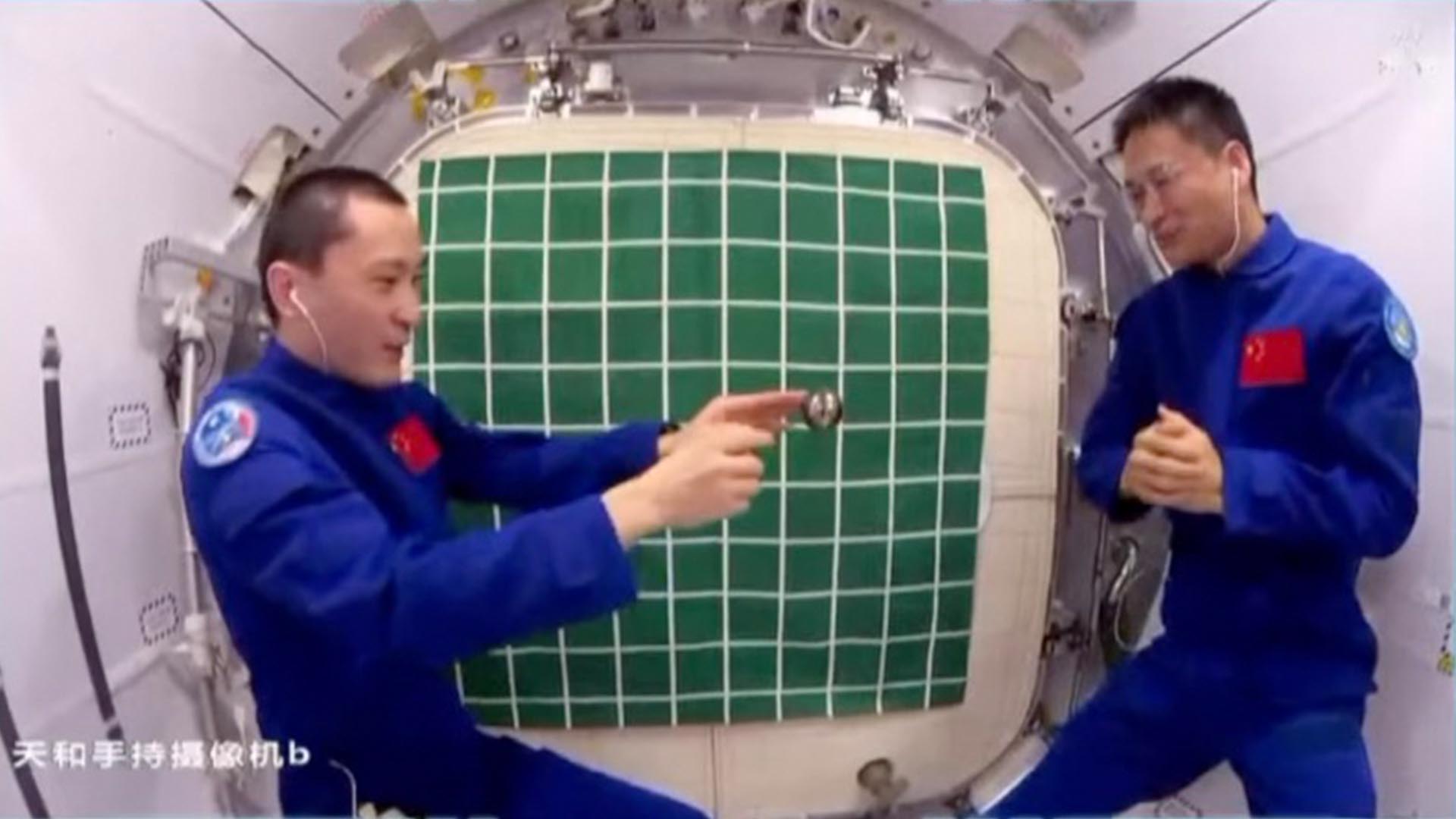
Further experimentation showed how a metal gyroscope could conserve angular momentum under static and rotating conditions.
06:15
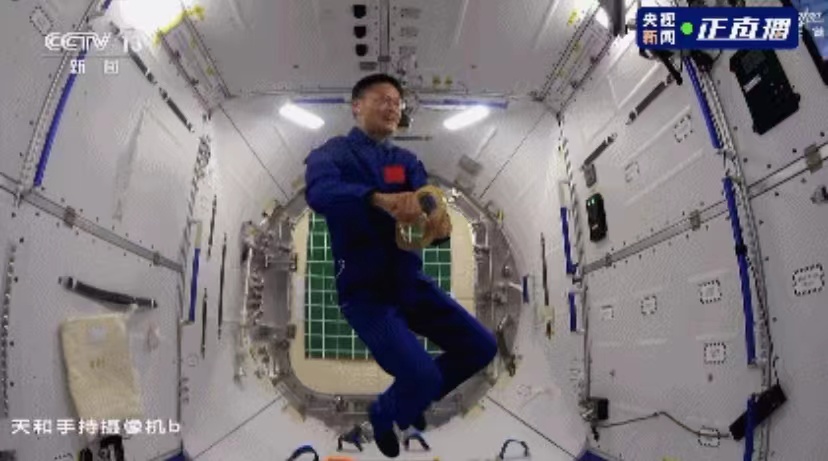
The trio answered questions from the students in the end.
When asked whether space junks can be seen from the space station and how the space station protects itself from them, Jing said that they haven't found a trace of space junk so far by way of looking through the portholes and using telescopes.
He admitted that space junk, or space debris, are harmful to the station, and said that the scientific and technical personnel on the ground will keep an eye on their move through technical measures.
Once there is a threat to the space station, corresponding measures would be taken, he said.
The space station is also covered with some special protective equipment, which is like wearing a pair of armor. "Even if we encounter space debris, we will be safe," he added.
02:08
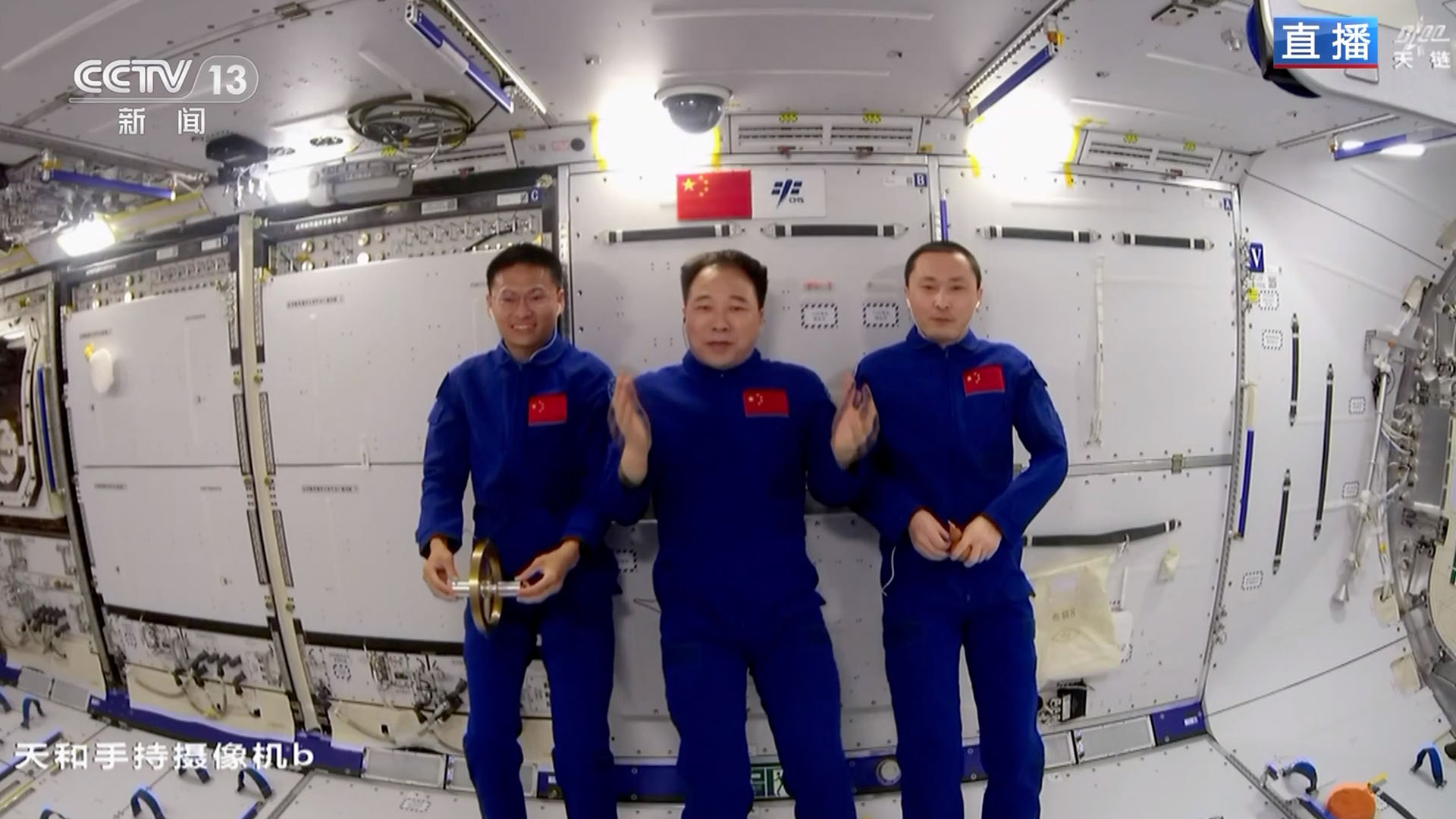
The Shenzhou-10 taikonaut Wang Yaping delivered the country's first space lecture in June 2013 with the help of her crew members Nie Haisheng and Zhang Xiaoguang.
As to the "Tiangong Class," the previous three science lectures were given by the Shenzhou-13 crew in December 2021 and March 2022 from the Tianhe core module, and the Shenzhou-14 crew last October from the Wentian lab module.
The Shenzhou-16 crew set off to space on May 30 this year and is expected to return to the Dongfeng landing site in November.